Worlds of TRAPPIST-1 system Part II
In my yesterday post I wrote about first impressions from NASA press-confererence about new findings in TRAPPIST-1 star system. There is much confusion in mass media, covering this event, many of them even couldn't count planets correctly.
First three planets in this system were discovered one year ago. Yesterday's press release covered another four planets, discovered with space infrared telscope Spitzer and Earth telescopes. So, there are in total 7 planets, orbiting red dwarf.
Image: NASA
This infographics I've posted allready, but repeat it here again for comparison
Image: NASA
Detailed orbits parameters calculated only for 6 planets. Also, approximately known are their masses and diameters, from this values average density was calculated. Densities of all six are of rocky bodies, so all planets are Earth-like, not mini Neptunes. Smallest planet weights as Mars, largest - 40% more than Earth.
Main feature of TRAPPIST-1 system: all planets are tightly packed. Orbits of first six planets are in the range between 0,011 and 0,045 a.u. (1 a.u. is the distance from Earth to Sun = 150 million kilometers).
Orbits of first and second planets are only 600 000 kilometers apart (for comparison: Earth-Moon distance is 380 000 kilometers). Standing on the surface of any planet, you can see all other even in daylight, and the main geological/planetological features will also be seen.
Image: NASA
Interesting, what would happen to human civilization, if we had such configuration in the Solar System. Staring at sky, we could see, instead of the Moon, large planet with visible continents, oceans, changing weather.. Would be civelization evolution faster, or not?
Image: NASA
And about habitability: Orbits of planets e, f and g located inside of habitable zone, calculated for this star. This means that in theory, there could exist liquid water. Planets b, c and d get more energy than Earth, and may be overheated.
Image: NASA
However with some conditions, even on hot planets liquid water can exist. First three planets for sure, and four others with high probability are tidally locked, that is , they look at their star with one side. Ind this case, there is eternal day zone, eternal night zone, and narrow twilight zone, where Red Sun periodically rises and sets. Depending of atmosphere presence/composition, and weather features, habitable areas on their surfaces can exist.
Insolation ratios for TRAPPIST-1 (energy, planet gets/energy, Earth gets from the Sun):
b - 4, 26 (compare - Mercury - 6,68)
c - 2,27 (Venus - 1,9)
d - 1,19 (closest to Earth)
e - 0,67 (Mars - 0,43)
f - 0,383 (again Mars)
g - 0,26
h - 0,132 (Ceres - 0,131)
Data taken from Novosti-Kosmonavtiki forum
Image: NASA
But in the whole, TRAPPIST-1 system is extremely interesting. Many of its features can be discovered with next-generation space telescope James Webb, to be launched in 2018. With this telescope it will be possible to observe planets directly, evaluate their surface temperature, and atmosphere composition.
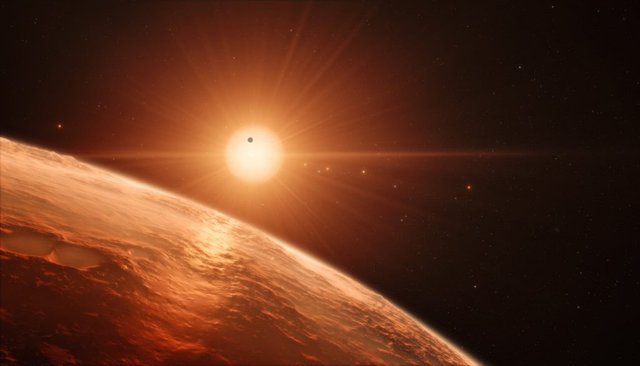
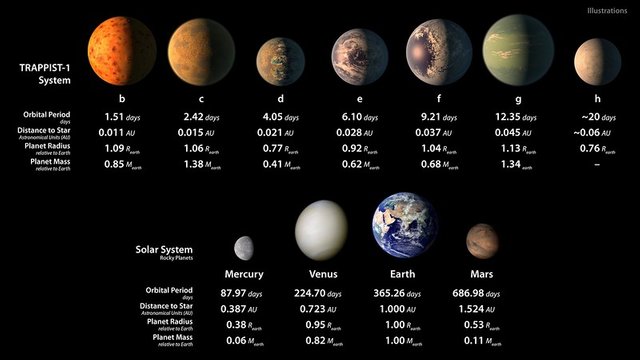
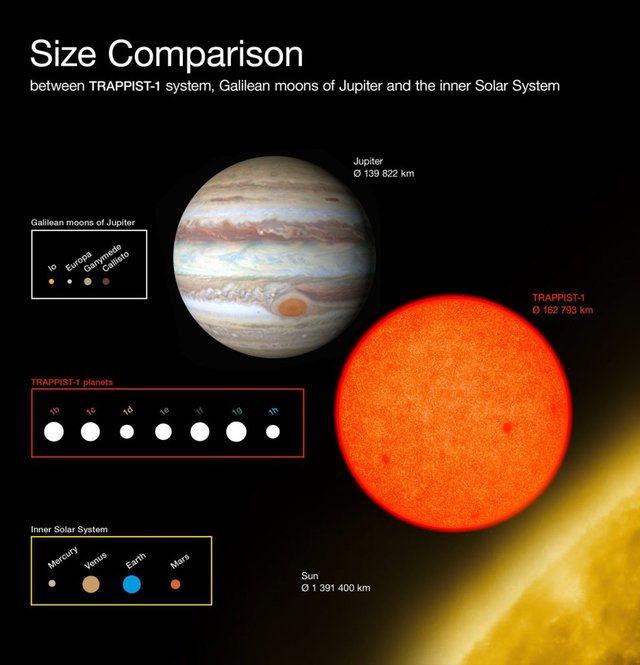
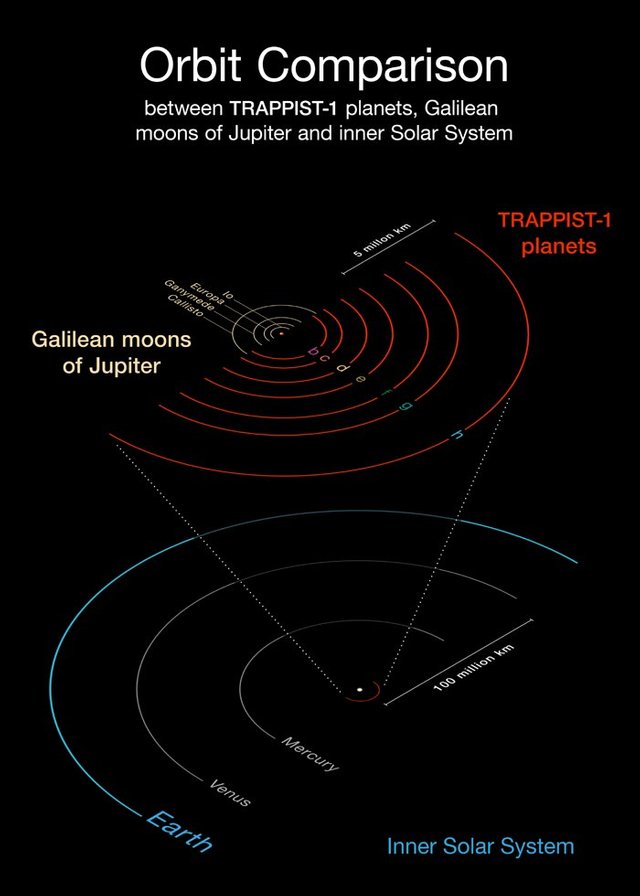
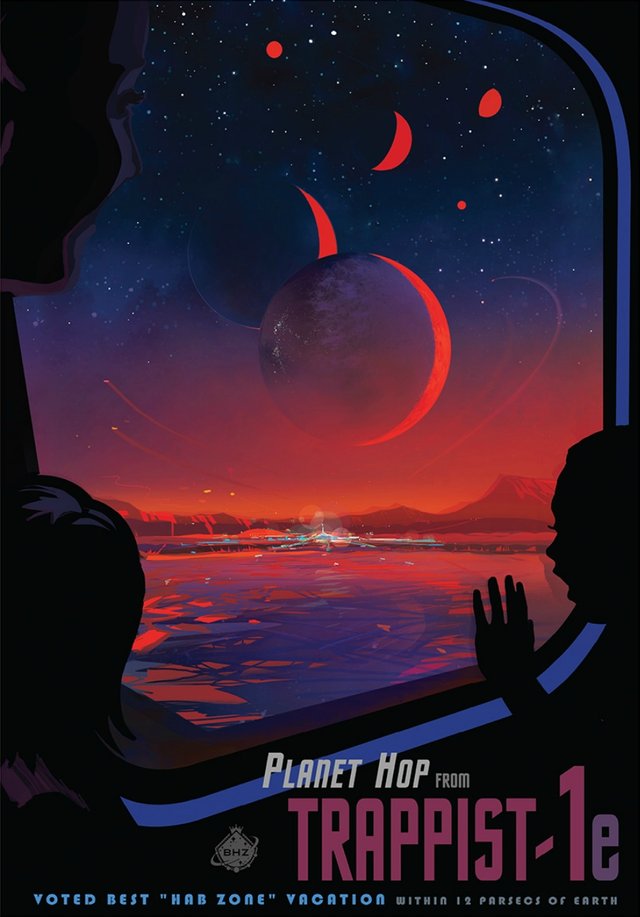
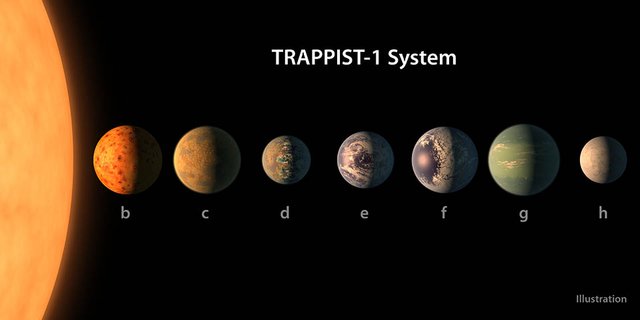
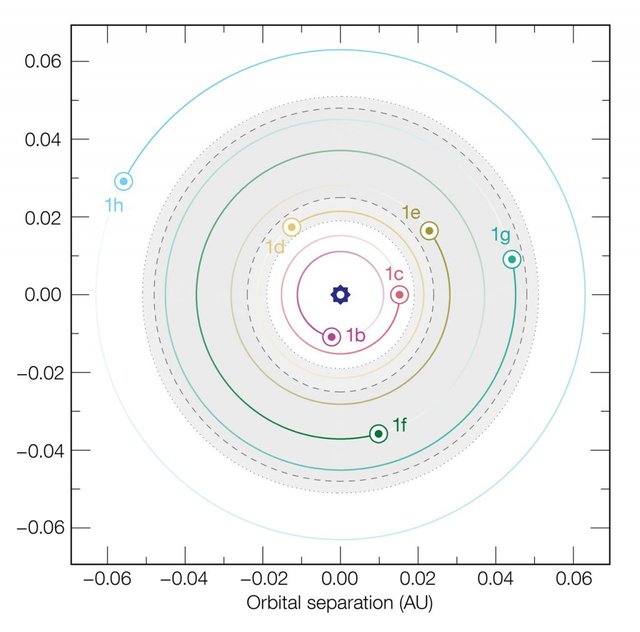
Good you beat me on this topic, you did it better then I could :D
Extremely interesting configuration.
The orbital period is really really short. If the planets are not one-sided and rotate in earth-similar time, that should make for some interesting night skies.
Thank you! People from NK forum already calculated that 4 internal planets are in 3:5:8:12 orbital resonance. Interesting also, what is with volcanoes there (Io at Jupiter). Anyway, we have to wait until Webb telescope is deployed, I think 2 or 3 years more
Forget the telescope, bring me the Warp Drive :D
With Warp drive we'd better address Professor @lemouth ;)
Huh, nice, followed him